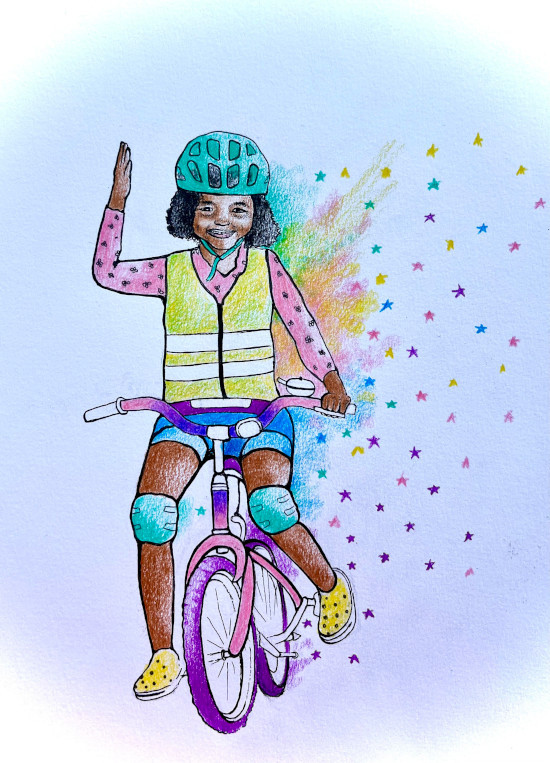Cycling safety
A work in progress

Illustration by Gabrielle Funk
As summer winds down, Winnipeg’s cycling safety remains in question. Despite some progress with various speed reductions in neighbourhood zones, poor city planning and toxic car culture still make Winnipeg’s biking community feel unsafe.
Winnipeg city council proceeded with four one-year speed-reduction projects. Speed limits were lowered from 50 km/h to 40 km/h in Worthington and Richmond West and from 50 km/h to 30 km/h in Bourkevale and Tyndall Park.
Meanwhile, the City targeted 27 speed-reduced streets to prevent risks to cyclists. These progressive and cost-efficient measures are a step forward in building up an active transportation network.
These measures are compatible with a World Health Organization suggestion to implement 30 km/h roads, as reduced speeds can protect cyclists from injuries.
However, some key intersections, like Assiniboine Avenue and Main Street, remain dangerous. There are frequent near-misses when drivers neglect to see cyclists go down the Assiniboine bike lane.
Negligent driving is a persistent problem for cyclists’ nerves as they attempt to reach their destinations safely.
In June, a 63-year-old male cyclist was involved in a hit and run at Isabel Street and Notre Dame Avenue. The cyclist was sent to the hospital in unstable condition that eventually upgraded to stable. The driver and accomplices fled the vehicle, and the case remains unsolved.
Hit-and-run incidents involving cyclists add to the layers of anger we feel when we see riders attacked by cars – and further disregarded by drivers who don’t attend to victims.
But while hit and runs are extreme safety problems for cyclists, another increased issue is cars parking in bicycle lanes.
Automobiles parked in bike lanes might seem harmless to drivers, but they cause frustration and increased vulnerability to cyclists.
Frequently, cyclists are jockeying for position for whatever limited space we have to ride around this city. We have to swerve around cars to either go on the road or sidewalk, increasing the risk of being hit by a car or perhaps just missing a pedestrian.
This summer alone, I could easily count almost 10 times when cars would park in bike lanes, putting cyclists at risk.
Seventy-nine per cent of Winnipeg commutes are by automobile, which adds to the problem of cyclist safety.
Poorly planned intersections, negligent hit and runs, automobiles parked in bike lanes and a road-rage incident where a cyclist was injured (and their bike damaged) all add to the toxic car culture in our city.
Cyclists’ constant worry about being hit at major intersections, hit and runs and swerving around parked cars in bike lanes are clear indications we still have ways to go to ensure Winnipeg cyclists feel safe at all times, despite some progress made.
Adam Johnston is a Winnipeg active- and public-transportation advocate.
Published in Volume 78, Number 05 of The Uniter (October 5, 2023)






